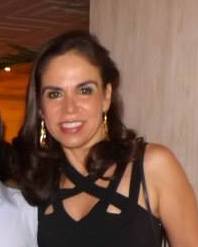From Teacher back to Learner
At first I had set out to write about my professional journey as a NNEST in the 1980s, so I thought it would be nice to reflect on some of the first course books I used in my first years as a teacher. That was when I decided to ask for some help from the IATEFL members on our Facebook page but the replies I got took me even further into the past, and that made me want to start my story from the very beginning: my life as a young English learner.
So, this post is dedicated to all the IATEFL members who helped bring back fond memories of my learning and teaching experiences by posting photos of materials and links to websites featuring earlier editions of EFL course books. It felt like a thrilling scavenger hunt precisely because I didn’t know exactly what I was looking for, and also because the findings were nothing short of amazing.
To make a long story short, I used the Strategies series in my teenage years at the same language school where I work now. Funnily enough, I don’t remember as much about my classes as I remember the materials used in our classes. I clearly remember the lessons, the characters’ names, and some of the texts from Developing Strategies and Building Strategies. I remember repeating and recreating the dialogues in my head while walking back home. I would create curious stories out of those dialogues, which were stretched into real life and whose characters turned into bone and flesh — my friends and family.
These things remind me of the 2010 ABCI conference in São Paulo, Brazil, in which Jeremy Harmer talked about fluency. We might think fluency happens when we talk to others, but according to Harmer, fluency is about our inner voice; and it happens when we are concentrating and listening. What enabled me to create those fantastic dialogues in my head was the fact that I’d paid enough attention, to the point of remembering all those words and expressions, and subsequently I would use them in other contexts because I wanted to communicate — even if it was only in my own head.
Reflecting on our own experiences as learners helps us provide our students with successful strategies that can help them through their own learning journeys. Because we are successful learners, they might feel motivated to try the same strategies. As NNESTs, we can and should share our own experiences to enrich our students’ learning.
P.S. If you’re feeling a little nostalgic — or if you’d like to learn more about course books from the 80s and 90s, here are a few links kindly provided by Mariel Amez and Martin Eayrs:
Run Run Shaw Libray website:
https://www.cityu.edu.hk/lib/collect/mr/reviewfile-AUDIO-PE.htm
Solo Quince Minutos
https://www.soloquinceminutos.com/2007/03/sam-on-radio-321-dis-is-octopus.html
Scott Thornbury’s A to Z blog post about the Strategies series:
https://scottthornbury.wordpress.com/2010/03/07/s-is-for-strategies/
And here are two links I came across during my scavenger hunt:
Materials writer Peter Viney’s article on the Streamline series and resources:
Peter Viney – https://peterviney.wordpress.com/elt-archive/streamline-and-in-english/
The Streamline series website:
Streamline Series – https://www.viney.uk.com/original_articles/streamlineart/slhist.htm






